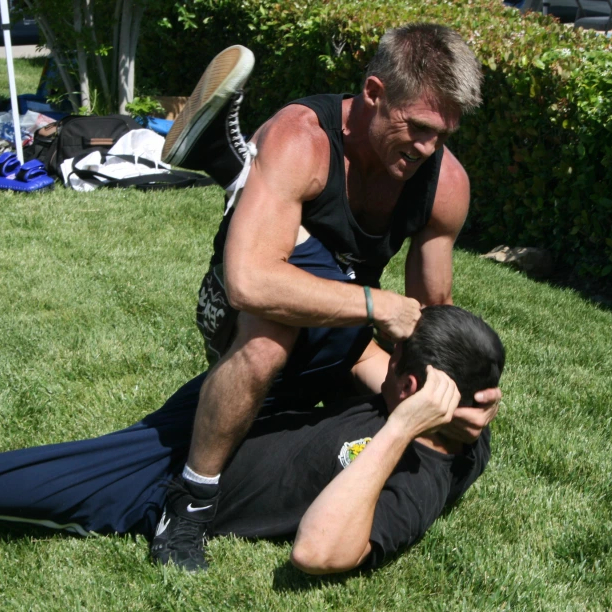Basic Muay Thai Requirements
Contents
Griffin Fighting Systems basic Muay Thai requirements include mastering fundamental strikes and combinations through structured training progression.
Basic Muay Thai Requirements
Griffin Fighting Systems
Our Muay Thai program follows a structured approach to ensure practitioners develop a strong foundation in this powerful martial art. Below are the requirements for various levels of training, designed to help students progress methodically through their Muay Thai journey.

Basic Muay Thai Requirements I and II
Basic Strikes
Every Muay Thai practitioner must demonstrate proficiency in the following fundamental techniques:
- Jab - A quick, straight punch with the lead hand
- Cross - A powerful straight punch with the rear hand
- Hook - A circular punch delivered with either hand
- Front Kick - A straight kick using the ball of the foot
- Teep (Push Kick) - A pushing kick used to create distance
- Dyae (Cut Kick or Round Kick) - A powerful swinging kick with the shin
- Khow (Knee) - Strike using the knee, typically to the body or head
- Sawk (Elbow) - Various elbow strikes, extremely powerful at close range
Basic Combinations
Students must demonstrate the following combinations with proper form, balance, and power:
- Teep, Jab, Cross, Hook
- Front Kick, Hook, Cross, Hook
- Shuffle Kick Low, Cross, Hook, Cross
- Additional combinations as taught in class
Intermediate Muay Thai Requirements I and II
Muay Thai 4 Counts
The 4-count system helps practitioners develop rhythm, timing, and flow between techniques. Students must demonstrate proficiency in the following patterns:
- Left to Right
- Right to Left
- Right to Right
- Left to Left
High Performance Series
These advanced drills incorporate defensive movements with counter-attacks:
- Shoulder Stop, etc.
- Bob and Weave, etc.
- Scoop the Jab, etc.
- Right Kick Primer, etc.
Additional Combos
Students must demonstrate:
- More complex 4-count combinations
- At least 10 of the 15 standard combinations taught in class
Advanced Training Components
As students progress, they will also need to demonstrate:
Clinch Work (Plum)
- Proper entry techniques
- Controlling positions
- Defensive techniques
- Offensive techniques including strikes from the clinch
- Sweeps and throws
Defensive Skills
- Blocks and parries
- Evasive footwork
- Checking kicks
- Counter-striking
Ring Strategy
- Controlling distance
- Managing the fight space
- Timing and rhythm
- Energy conservation
Training Methodology
Our approach to Muay Thai training emphasizes:
- Technical precision before power or speed
- Gradual progression through the requirements
- Regular padwork to develop timing and power
- Controlled sparring to apply techniques
- Conditioning specific to Muay Thai
Assessment Process
Students will be evaluated on:
- Technical execution
- Power and speed appropriate to level
- Understanding of applications
- Overall performance and improvement
Remember that mastering these requirements takes time and consistent practice. Focus on quality over quantity, and always train with purpose and mindfulness.
Progress through these requirements will prepare you not only for potential competition but will develop functional striking skills applicable across various combat sports and self-defense scenarios.
About the Author

Lester Griffin
Lester Griffin is a professional martial artist and certified instructor with over 30 years of experience. He currently teaches Jeet Kune Do, Grappling, Muay Thai, Savate, and Kali at Griffin Martial Arts in San Jacinto, CA. He also regularly judges UFC and King of the Cage events.
You Might Also Enjoy
Lester's Logic 5 Roundhouse Kick Captures
Here I demonstrate a couple of ways to capture the right round kick. You capture over or under depending on where the opponent is aiming the kick.
See it, Feel it, Do it – The Art of Practice
The way to become a better MMA fighter is to have and maintain a consistent practice regimen. Practicing is often an overlooked skill.
